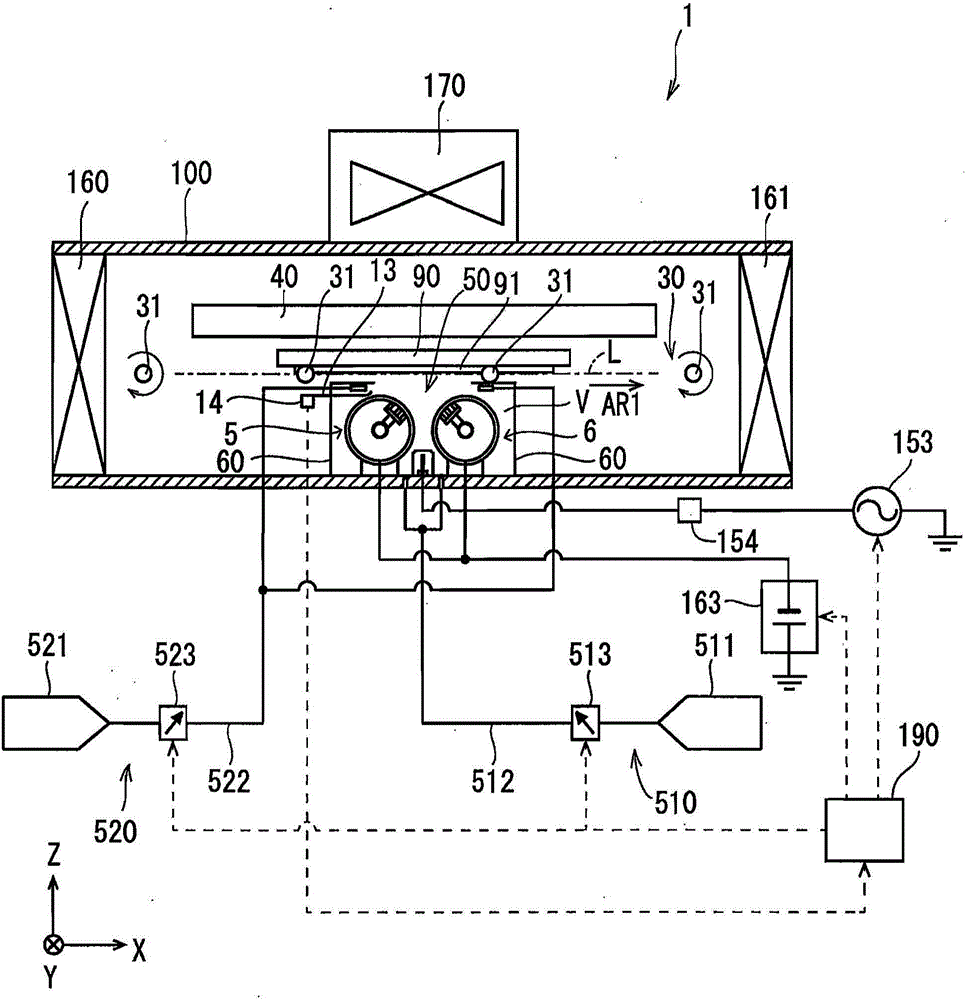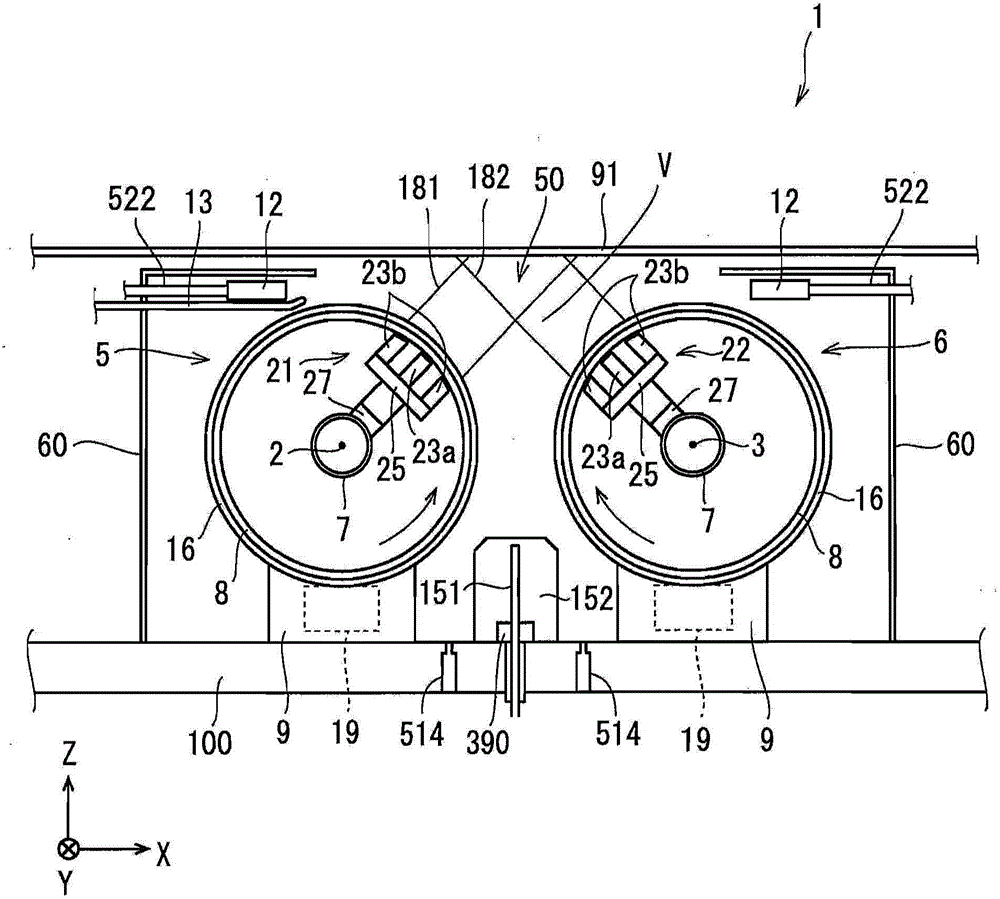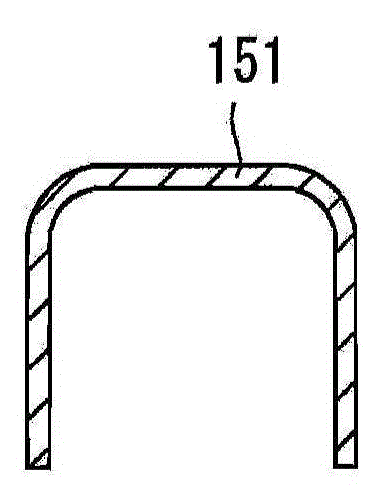Sputtering device
A sputtering device and sputtering gas technology, applied in the field of sputtering devices, can solve the problems of low sputtering rate, target material damage, ion damage affecting the substrate, etc. The effect of body density
- Summary
- Abstract
- Description
- Claims
- Application Information
AI Technical Summary
Problems solved by technology
Method used
Image
Examples
no. 1 approach >
[0069]
[0070] figure 1 It is a cross-sectional schematic diagram schematically showing the schematic structure of the sputtering apparatus 1 of 1st Embodiment. The sputtering apparatus 1 is an apparatus for forming a thin film on an object with a film (here, for example, the substrate 91 ) by reactive sputtering. Base material 91 is formed of, for example, a silicon wafer or the like.
[0071] The sputtering device 1 has: a chamber (also referred to as "vacuum chamber") 100; a sputtering source 50 disposed inside the chamber 100; a transport mechanism 30 for transporting a substrate 91; a control unit 190 for The entire sputtering device 1 is uniformly controlled. The chamber 100 is a hollow member having a rectangular parallelepiped shape. The upper surface of the floor of the chamber 100 is in a horizontal posture. In addition, the X-axis and the Y-axis are respectively axes parallel to the side walls of the chamber 100 . In the description of the embodiment, the ve...
no. 2 approach >
[0126] Figure 8 It is a schematic cross-sectional view showing the periphery of the sputtering source 50A of the sputtering apparatus 1A of the second embodiment. The sputtering device 1A differs from the sputtering device 1 in that the sputtering device 1A has a rotating cathode 5A instead of the rotating cathodes 5, 6, and has a plurality of inductively coupled antennas ("high-density plasma sources") 151A instead of multiple An inductively coupled antenna 151. A plurality of inductively coupled antennas 151A are arranged at intervals along the longitudinal direction of the rotating cathode 5A. In addition, 1 A of sputtering apparatuses has each nozzle 514 corresponding to each inductive coupling antenna 151A only between the inductive coupling antenna 151A and the rotating cathode 5A.
[0127] The rotating cathode 5A has the same structure as the rotating cathode 5 except that it has a magnet unit 29 instead of the magnet unit 21 . The magnet unit 29 has the same struct...
no. 3 approach >
[0130] Figure 9 It is a cross-sectional schematic diagram showing the periphery of the sputtering source 50B of the sputtering apparatus 1B of the third embodiment. Figure 10 It is a schematic plan view showing the inductive coupling antenna 151B of the sputtering apparatus 1B.
[0131] The sputtering apparatus 1B differs from the sputtering apparatus 1 in that the sputtering apparatus 1B has a plurality (four in the illustrated example) of inductively coupled antennas 151B arranged along the longitudinal direction of the rotating cathode 5A instead of a plurality of The antenna 151 is inductively coupled, and a plurality of nozzles 12 are provided only on the upstream side of the rotating cathode 5A on the conveyance path L. In addition, in the sputtering apparatus 1B, a pair of nozzles 514 are provided on the upstream side and the downstream side of each inductively coupled antenna 151B on the conveyance path L, and the pair of nozzles 514 are arranged in the direction (Y...
PUM
| Property | Measurement | Unit |
|---|---|---|
| Inductance | aaaaa | aaaaa |
Abstract
Description
Claims
Application Information
 Login to View More
Login to View More - R&D
- Intellectual Property
- Life Sciences
- Materials
- Tech Scout
- Unparalleled Data Quality
- Higher Quality Content
- 60% Fewer Hallucinations
Browse by: Latest US Patents, China's latest patents, Technical Efficacy Thesaurus, Application Domain, Technology Topic, Popular Technical Reports.
© 2025 PatSnap. All rights reserved.Legal|Privacy policy|Modern Slavery Act Transparency Statement|Sitemap|About US| Contact US: help@patsnap.com



